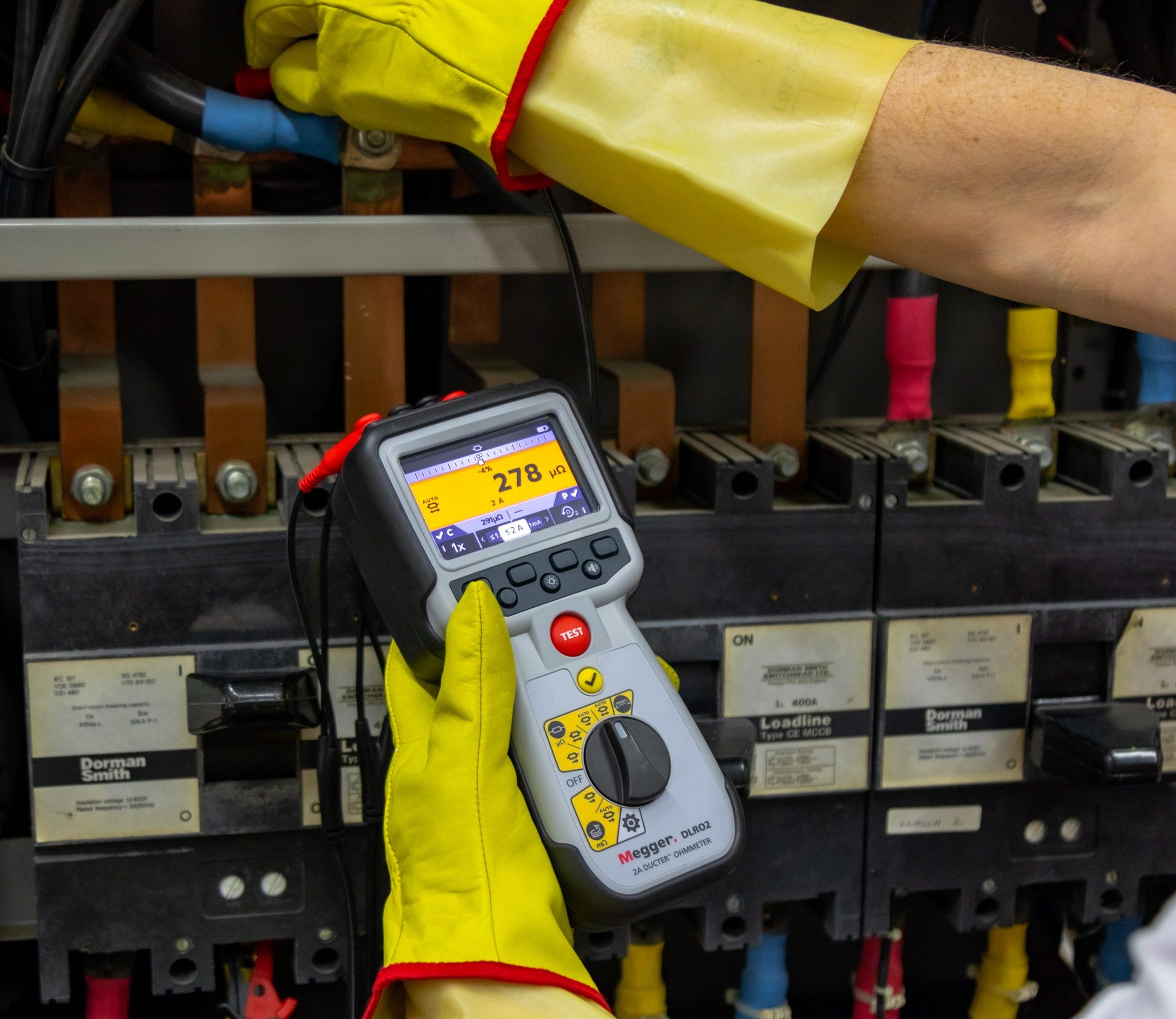An easily-overlooked function is forward/reverse polarity, where the tester will automatically measure in both polarities, display them both on a subscale, and average the readings on the main display. This eliminates the effects of interference such as thermal EMFs. These are normally of no consequence but loom large when trying to measure in μΩs.
A leading-edge feature against nuisance downtime in modern testers is firmware update. This is almost unheard-of across a broad spectrum of testers but is available on the leading edge. No more agonizing weeks of waiting while critical equipment is returned to the manufacturer for “upgrades”. This can be as simple as connecting a USB flash drive and following basic directions on screen. The user interface may be upgraded as well as measurement firmware.
A 2-Amp Low Resistance Ohmmeter can be a valuable tool in automotives and electric vehicles for checking battery connections, weld quality and robotics. In data centers, during installation of main panels, generator and UPS systems; verification of protective device contact resistance, busbar feeds and lapped joints, and cable lug connections. Track joints and signaling connections can be tested for railroads. Marine cable-laying applications as well as cathode protections systems and ship-to-shore bonding can be tested. The bonding between welded joints and grounding systems are tested in oil and gas pipelines. The space industry requires structural metal-to-metal bonding, ground network and carbon fiber bonding. Medical applications require grounding and bonding against shock. Panel and switchgear manufacturers need production line testing, site commissioning and maintenance. Robotics call for regular testing of wiring and connections subject to stress, movement and vibration. And the electrical infrastructure affords many testing situations, including cable resistance and lug connections, interlinking busbars, switchgear and protective devices. Be certain that the tester includes 400 Hz noise immunity if used in the aircraft, railroad or shipbuilding industries.
The challenge of measuring down to 1μΩ with a handheld tester has yielded a rainbow of additional features and functions to make testing easier, faster and more reliable.




